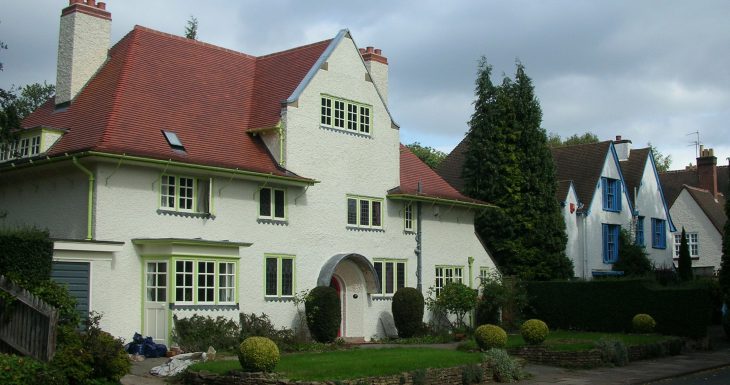21 Yateley Road
By H T Buckland and E Haywood Farmer for Buckland himself who lived there until his death.
Edgbaston, Birmingham, B15 3JP

The house is a Grade I Arts & Crafts detached house and garden in a leafy Edgbaston street. It was designed as a family home by the architect H.T. Buckland in 1899 until sold by Buckland’s widow in 1951.
In his domestic work Buckland showed an originality that was much admired, helping to make Birmingham the centre for a magnificent group of provincial architects. Alan Crawford, distinguished authority on the Arts and Crafts period, confirms that Buckland “developed such a highly personal style of such quality in domestic work that he must rank with the best of his time”.
Buckland was born in Barmouth, Wales and educated at King Edward’s School, Birmingham and the school of architecture at Birmingham School of Art. He worked as architect to the School Board in 1901 and then served as architect to the City of Birmingham Education Committee. His buildings are among Birmingham’s most forward-looking of their time. He also sat on the Executive Council of The Birmingham Civic Society which devised many schemes for the improvement of Birmingham in the 1920s and 1930s.
Much of modern Birmingham owes its origins to the ideas put forward by Buckland and his partner Haywood.
